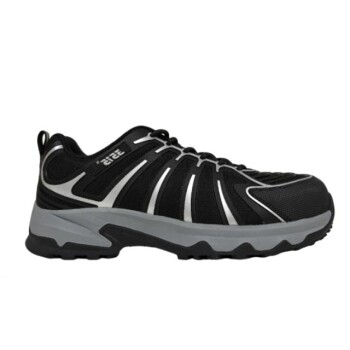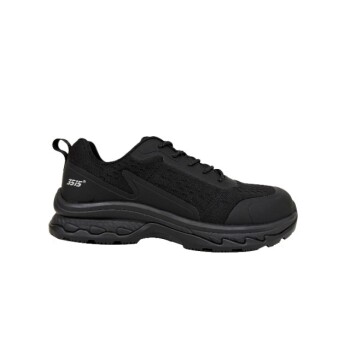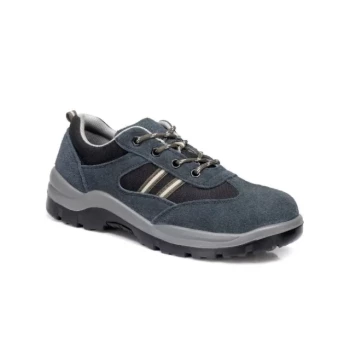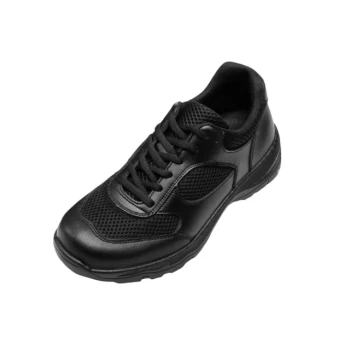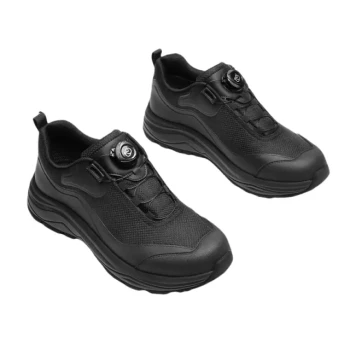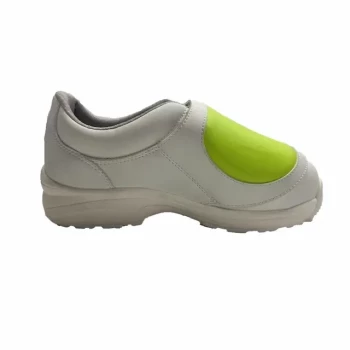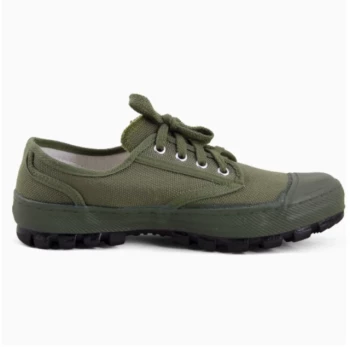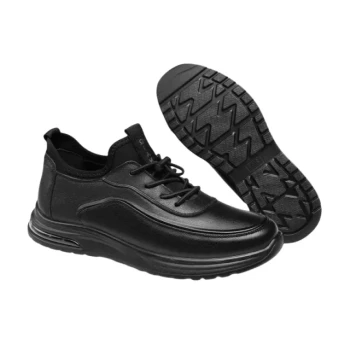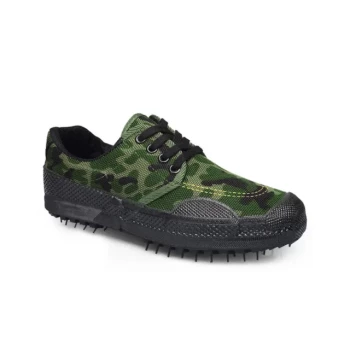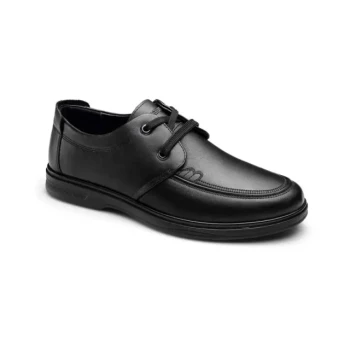Ultimately, your feet hurt in safety shoes because these shoes are engineered for protection, not anatomy. The primary causes of pain stem from the rigid safety toe cap creating pressure points, an improper fit that allows for rubbing, and the heavy, inflexible construction that fights your foot's natural movement.
The core issue is a conflict between the shoe's protective features and your foot's natural mechanics. Pain is a signal that one or more of these features—the safety toe, the rigid sole, or the overall fit—is not properly aligned with your specific foot shape and gait.

The Anatomy of Safety Shoe Pain
To solve the problem, you must first understand the specific components of a safety shoe that contribute to discomfort. These features are designed to protect you from workplace hazards, but they create unique challenges for your feet.
The Unforgiving Safety Toe
The defining feature of a safety shoe is its reinforced toe cap, typically made of steel, aluminum, or a composite material. This creates a rigid, unyielding box around your toes.
If the toe box is too narrow or short for your foot, your toes will constantly press or rub against this hard surface. This friction is a direct cause of blisters, corns, and calluses.
Furthermore, consistent pressure on the sides of your big toe can force the nail to grow into the skin, leading to painful ingrown toenails.
Inflexible, Puncture-Proof Soles
Safety boots are built with thick, rigid outsoles and often contain a steel or composite plate in the midsole to prevent punctures from below.
This rigidity prevents your foot from flexing naturally as you walk. Your foot muscles and arches have to work harder with every step, leading to strain and conditions like plantar fasciitis or general arch pain.
The Burden of Weight
The durable materials and protective components make safety shoes significantly heavier than standard footwear.
Carrying this extra weight on your feet all day long leads to significant muscle fatigue, not just in your feet but also in your ankles, calves, and even your lower back.
Common Pitfalls and Fit Issues
Beyond the shoe's construction, how it fits is the single most important factor for comfort. Many people wear the wrong size safety shoe, leading to predictable problems.
When the Shoe is Too Big
A loose shoe allows your foot to slide forward and backward with each step. Your heel will lift and rub against the back of the boot, creating blisters.
Simultaneously, your toes can slam into the front of the hard toe cap, causing bruising and pain.
When the Shoe is Too Small
A shoe that is too tight or narrow is an even bigger problem. It constricts your foot, pinching nerves and restricting blood flow.
Most importantly, it cramps your toes together inside the unyielding safety cap, creating immense pressure and friction that is a guaranteed recipe for pain.
How to Find a Comfortable Safety Shoe
You do not have to accept foot pain as a cost of being safe at work. The solution is to choose footwear that correctly accommodates your specific foot shape while meeting your job's safety requirements.
- If your primary focus is eliminating toe pain: Ensure there is a thumb's width of space between your longest toe and the end of the safety cap, and verify the toe box is wide enough for your toes to splay naturally.
- If your primary focus is reducing fatigue: Look for boots with lighter composite safety toes instead of steel and consider adding a high-quality, cushioned insole for better shock absorption.
- If your primary focus is preventing blisters: Prioritize a perfect fit by trying on shoes at the end of the day when your feet are most swollen, and wear moisture-wicking socks to keep your feet dry.
By understanding the unique demands of safety footwear, you can make an informed choice that protects both your feet and your well-being.
Summary Table:
| Common Cause of Pain | Specific Problem | Resulting Condition |
|---|---|---|
| Rigid Safety Toe Cap | Creates pressure points and friction | Blisters, corns, ingrown toenails |
| Inflexible, Heavy Sole | Fights foot's natural movement | Plantar fasciitis, arch pain, muscle fatigue |
| Improper Fit (Too Big/Small) | Allows rubbing or constricts foot | Heel blisters, bruised toes, general discomfort |
Stop sacrificing comfort for safety. As a large-scale manufacturer, 3515 produces a comprehensive range of safety footwear designed for distributors, brand owners, and bulk clients. Our production capabilities encompass all types of safety shoes and boots engineered with anatomical designs, lighter materials, and superior cushioning to prevent the common causes of foot pain. Let us help you provide footwear that protects and comforts your workforce.
Contact 3515 today for a quote and discover our solutions for comfortable, durable safety footwear.
Visual Guide
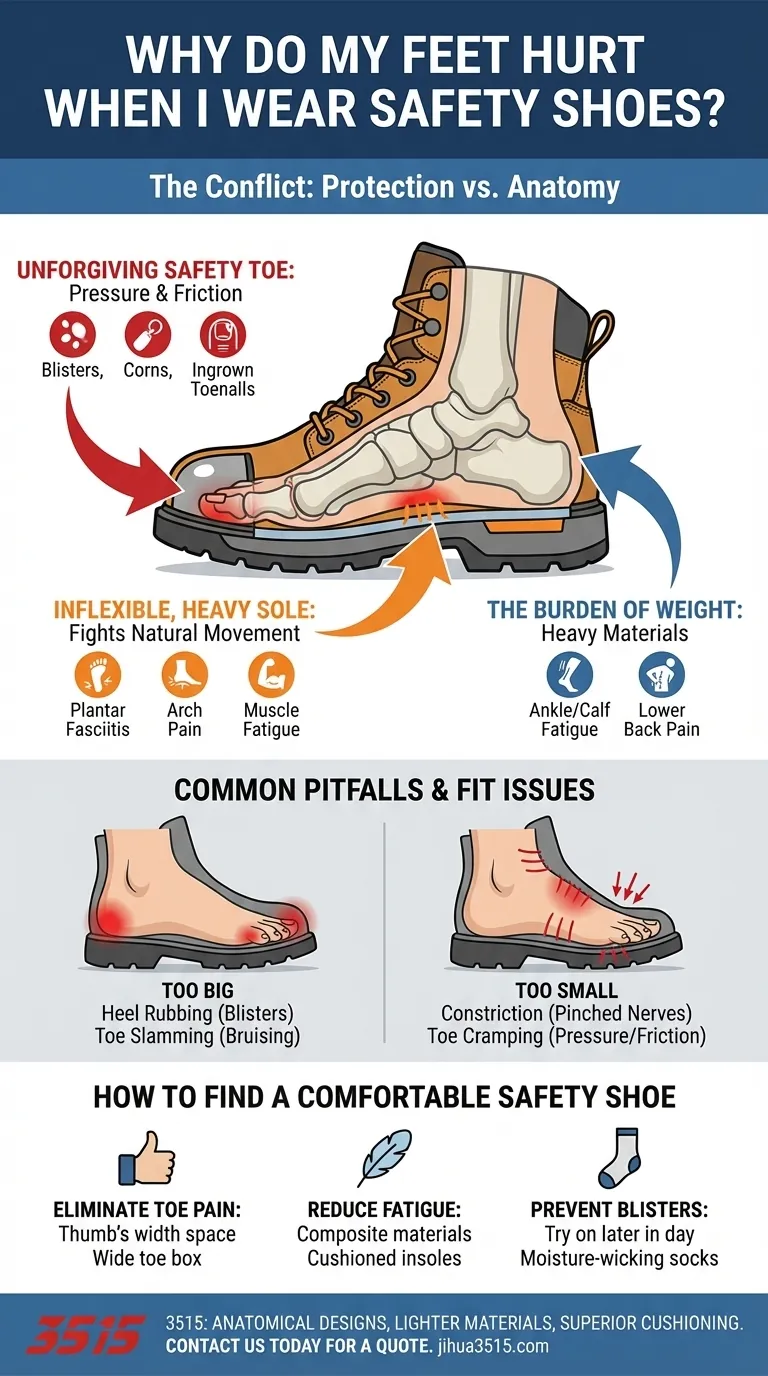
Related Products
- Premium KPU Athletic Safety Shoes for Wholesale
- Premium Lightweight Safety Shoes for Wholesale & Bulk Orders
- Custom Safety Shoe Manufacturer for Wholesale & OEM Brands
- Wholesale Leather Safety Boots with Customizable Protective Toe
- Wholesale Durable Breathable Safety Boots Custom OEM Manufacturer
People Also Ask
- What should warehouse work shoes include for safety? Essential Features for All-Day Protection
- What are the EN ISO 20345 norms for safety shoes? A Guide to Choosing the Right Protection
- Why is expert help recommended when selecting safety shoes? Ensure Perfect Fit & Hazard Protection
- What types of workplace hazards require protective footwear? Essential Guide for Workplace Safety
- What does a green triangle symbol on safety footwear mean? Your Guide to Maximum Puncture & Impact Protection
